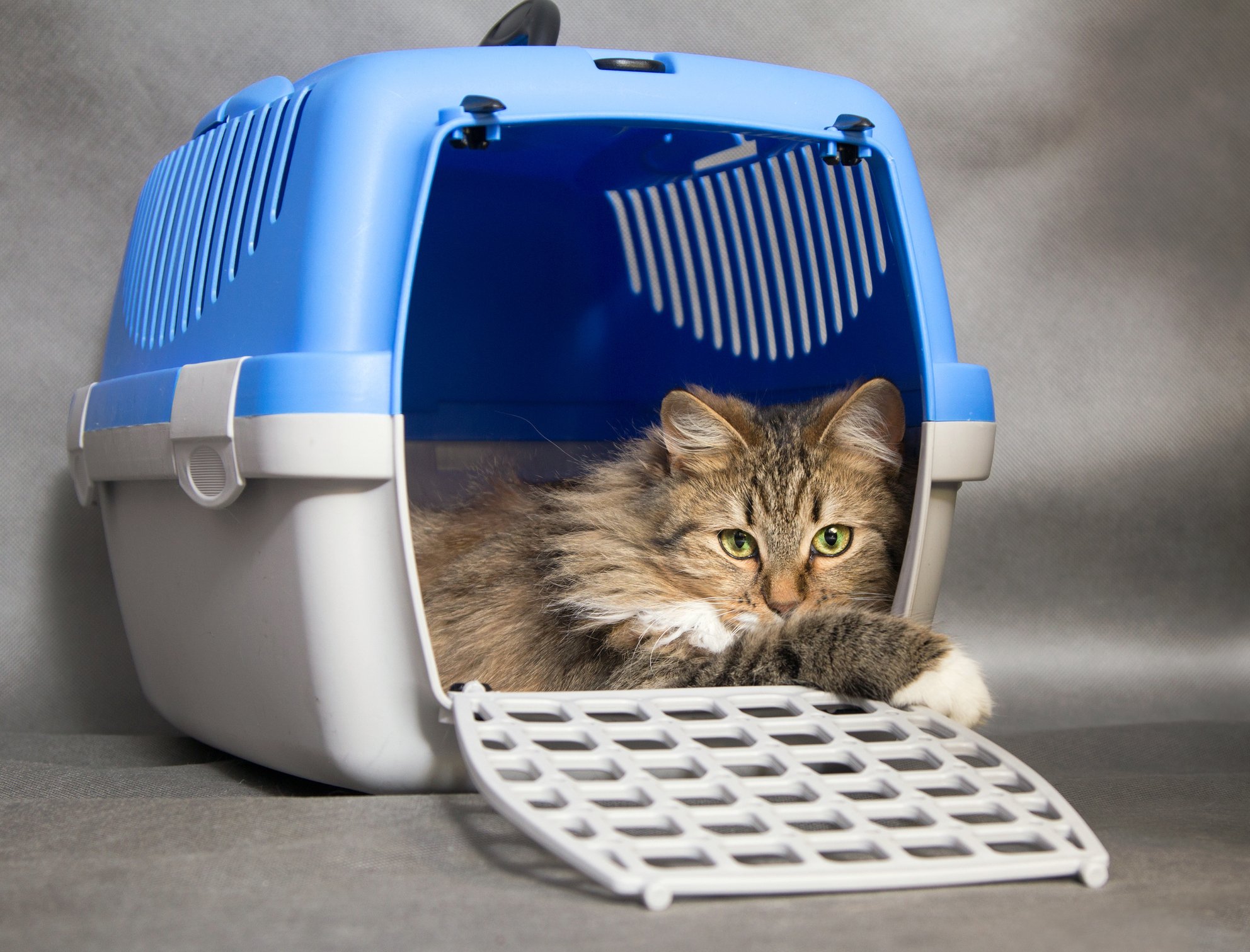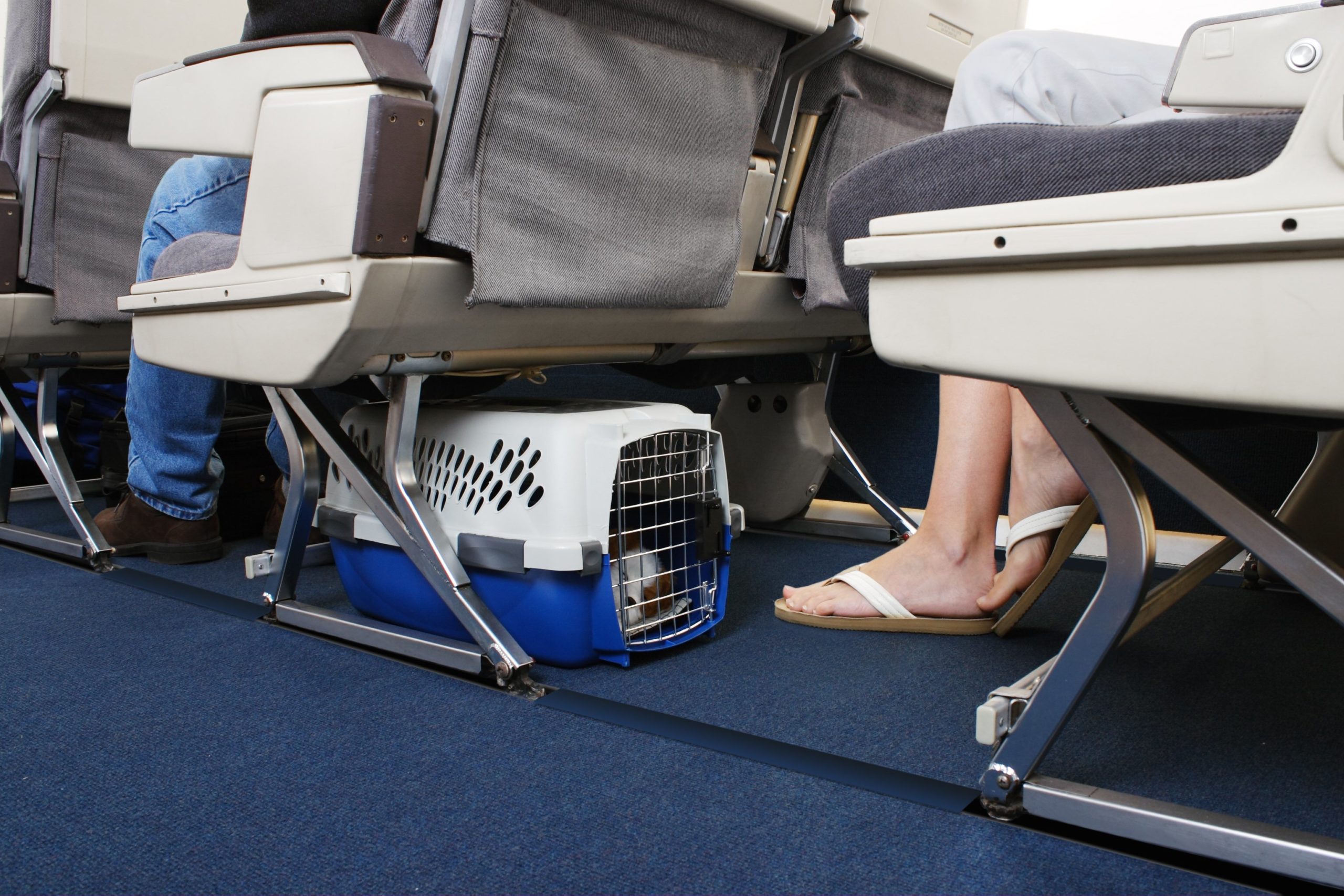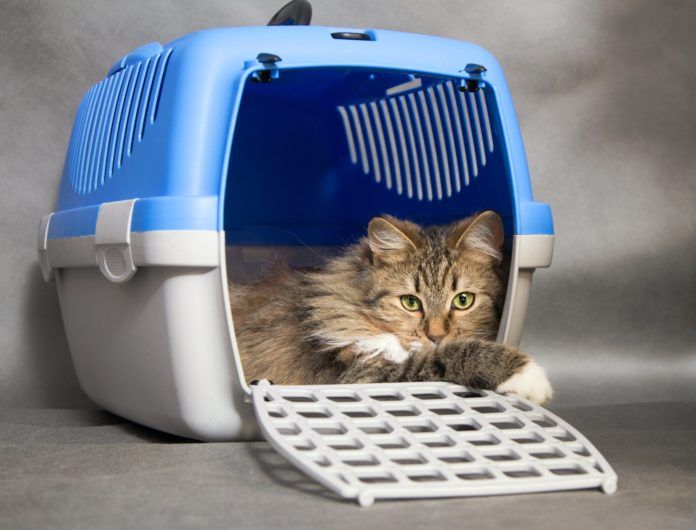© fantom_rd/Getty Images


We’ve all had the experience of taking our cats to the veterinarian for check-ups and understand that getting them from one place to another can a daunting task! However, it doesn’t have to be. These days, cat carriers are blossoming into cat-friendly zones. There are even carriers available to the discerning cat owner in many forms and fashions. We examine some of the options that can help you and your cat safely enjoy traveling instead of dreading it!
Hard-Shell Carriers
When shopping for your cat’s carrier, take into consideration the size of your cat for optimum comfort and space to add food or water, if needed. A sturdy, hard-shelled carrier is preferable for vet visits.
According to Stephanie Borns-Weil, DVM, head of the Behavior Clinic at Tufts, “The size does matter, but I think that the type of carrier matters at least as much as the size. The best carriers for challenging cats are those in which the top and bottom are easily separated. These allow a vet or technician to gently lift a cat out, as opposed to pulling or tipping her out of the front.
“Most cats prefer to have the carrier placed on a high surface such as a table or bench rather than on the floor. Carrier openings should face away from other carriers so the cats do not have to look at other pets. Also, dogs should be prevented from approaching and looking in the carriers.”
It’s important to be in tune with your cat when you visit the vet. Because of the various unfamiliar smells, sights and noises that you’ll encounter at the vet’s office, your cat requires as much protection from these sensory intrusions as possible. While there are some cats-only practices, many other small animal veterinary practices do have separate areas just for cats. It’s wise to utilize these spaces whenever possible.
Soft-shell cat carriers
There are many types of soft-shell cat carriers on the market today. When looking at these, it’s important to note whether the structure and materials allow for easy clean up. Remember, the carrier needs to be sturdy enough to stand on its own and yet comfortable and large enough to create a safe space for the cat. A soft-shell carrier may be ideal for some people because it is lighter in weight and can be easier to carry.
If you use a soft-shell carrier for short trips, however, be aware of the carriers’ tendency to bend and fold. If this is happening, it is important to address the problem immediately in order to keep your cat secure and comfortable.
Strolling with your cat?
Many cats are indoor-only pets due to the many dangers for the outdoor cat. Yet, you may want to allow your pet some outdoor time. Increasingly, cat strollers have made their appearance in mainstream pet transportation. Together you and you furry companion can enjoy watching birds and breathing in the many scents of the outdoors that indoor-only cats miss. As cats are mostly sedentary creatures, spending their outdoor times sunning and cooling in the shade, a low-key venture outside with you and your cat is possible. Maybe you can enjoy a book as you sit on a park bench, while your cat watches the world from the safety of her mesh-enclosed stroller.
When you seek out a stroller, you should choose one that is sturdy and which offers an ergonomically-designed grip. And as pet strollers become increasingly popular, you can even find streamlined three-wheeled designs with larger wheels to absorb uneven ground. From one-cat strollers to two-cat strollers — many of which collapse flat for easy storage — there is something for everyone’s outdoor-loving feline.
Whatever type of cat carrier you choose for your specific purpose, remember to keep up-to-date identification on it — your name, phone number and cat’s name and vet number. Also, some carriers have pockets and pouches in which to put identifying paperwork and medicines.
Desensitizing your cat
Most of us have experienced the stressful scene of revealing the carrier to our cat and attempting to place her in the carrier as she desperately tries to escape and hide. With time and effort, it is possible to convert your cat’s fear of her carrier into accepting the carrier as a place of safety and comfort.
“It is best if the owner prepares well in advance of the veterinary appointment. Desensitization cannot be rushed and must go at the pace set by the cat. I recommend starting by cleaning the carrier well and spraying it with Feliway. It should be left open with treats and/or catnip inside,” says Dr. Borns-Weil. “If the kitty is willing to go in, meals can be fed in the carrier. A soft pad can also be placed in the carrier between meals so that it is a comfortable place to rest. When the cat goes in regularly for meals or treats, the owner should begin closing the door to the carrier.
It should be closed first for only a moment and then opened again before the kitty becomes upset. The length of time that the door remains shut should be gradually extended until the cat is comfortable in the carrier for at least 30 minutes.”
Let your cat have some say
“As much as possible, let the cat make his or her own choices. For example, when entering the exam room, the carrier should be opened to allow the cat to come out on his or her own. But what is most important is preparing for the experience by desensitizing the cat to the carrier,” says Dr. Borns-Weil. “For people who adopt their cats as kittens, desensitization to the carrier should be done right away. Also, for kittens, teaching a cat to be handled and gently restrained (for food rewards) is an important life skill that will pay off for the rest of the cat’s life.”
Once your cat is comfortable with her carrier, it’s time to take her on short trips. She can associate trips with treats as a positive experience. Taking short rides will help before long travel, so your feline traveler can feel the road and the motion. With your positive reinforcement and helpful treats, your cat may even become a road warrior! When the vet visits begin, she will have other positive experiences to recall.
Depending on the length of your trip, food, water and even litter may need to be placed in the carrier. It’s always good to have these items in the carrier before a long trip, to avoid opening the door. If you must open the door of the carrier, make certain you are inside the vehicle with doors closed or in an enclosed space to prevent your cat from escaping to prevent injury or loss.
“Another thing to consider, for people with more than one cat, is the importance of reintroducing the cats after the vet appointment,” emphasizes Dr. Borns-Weil. “To prevent reintroduction aggression between the cats, they should be kept separate for a few hours and gradually reintroduced in association with positive experiences such as food, play and/or affection.” — Kim Cady


When You Need to Take a Longer Trip
Safety, comfort and confidence are the primary goals you should have for your cat when traveling. The more confident you are in working with your cat in a carrier, the better your cat will respond. Getting your cat used to her carrier long before your first trip will do much to avoid a nervous and fractious cat. Here are some additional tips for specific types of travel.
Automobile travel: It’s important to use a cat carrier whenever
transporting her in a vehicle. A cat roaming around in a moving car is very unsafe for both the cat and owner, and should never be allowed. Once in the car, secure your cat in his carrier to prevent falling off the seat in case of a quick stop. Hard carriers are the best type to use in a vehicle. “A rigid carrier is likely to be better for a cat because it does not cave in when placed on the ground or in the car,” says Dr. Borns-Weil. “It is firm and can house water and food.”
Travel by airplane: Each airline has specific rules and regulations to transport your cat. It’s important to research these regulations very carefully before planning an airline trip. There are specific dimensions and requirements for air travel pet carriers, and they sometimes vary for different airlines. Don’t be turned back at the terminal just because you don’t have the correct carrier. Some airlines only allow animals in the cargo area. However, it is always preferable to fly with your cat in the cabin where you can constantly monitor her. This will require advance planning.
Travel on a train: As in airplane travel, trains like Amtrak have rules and regulations as to what carriers can be used. Hard or soft carriers are allowed, but size and weight are limited. Of course, a carrier that is both comfortable for you and your cat is vital, as trains will frequently stop and start along the journey. If you are changing trains, a waterproof covering should be brought along, to prevent any water from leaking into the carrier. Always keep your carrier in your sight.
By adhering to the specific rules of your chosen mode of transportation, and having the correct carrier for your cat with all the necessary accessories, an enjoyable time can be had by both you and your cat.




